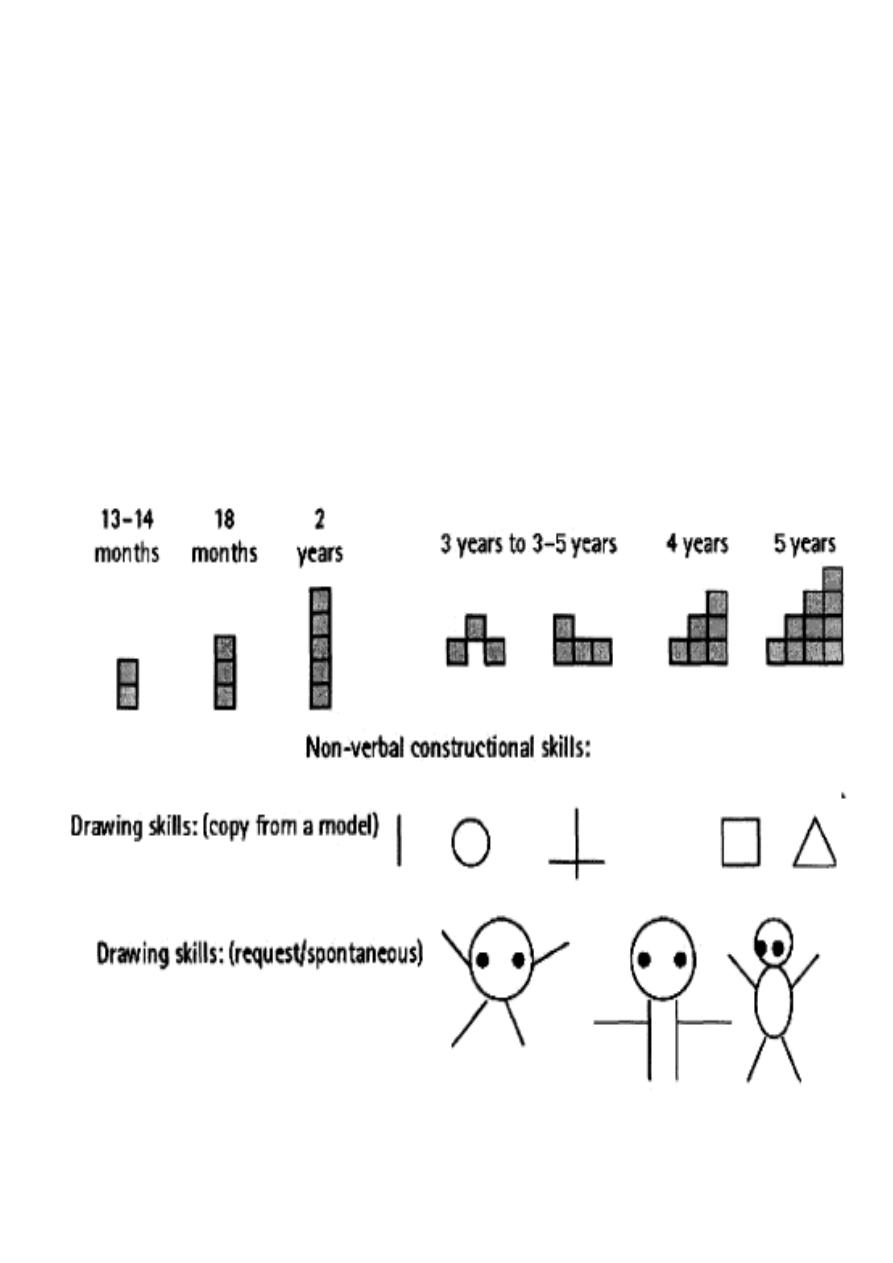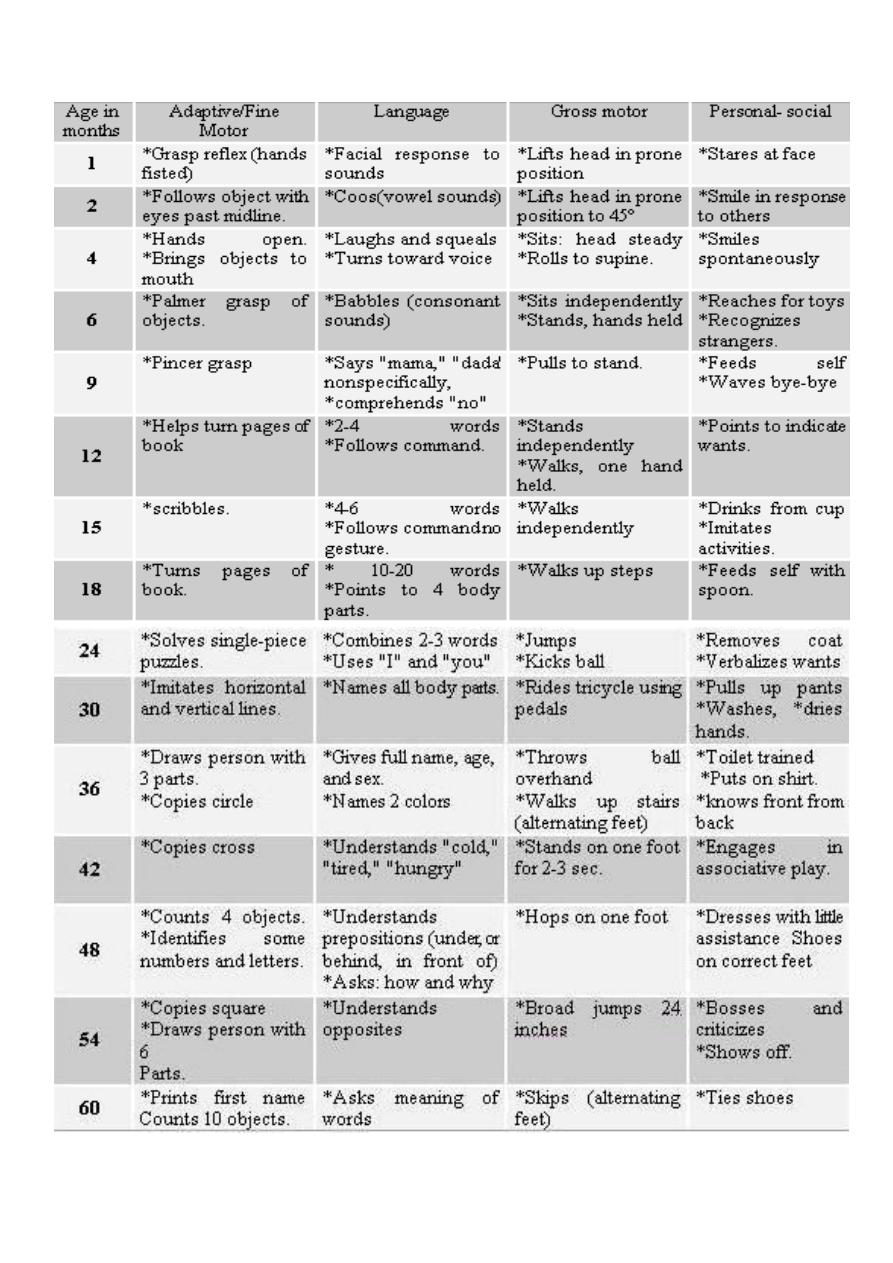
Pediatrics Lec3 Dr. Ziyad
1
DEVELOPMENT
Development: changes (complexity) in function including those influenced
by emotional and social environments
Developmental pediatrics
:
is concerned with the processes of children's
learning and competent adaptation to the environment from birth to
adulthood.
There are three purposes:
To promote optimal physical and mental health and development for all
children.
To ensure early diagnosis and effective treatment of impairments of body,
mind and personality;
To discover the cause and means of preventing such impairments.
The context for observing a child's development is the family, school and
community.
Family, educational, social, cultural, spiritual, economic, environmental
and political forces act favorably or unfavorably, but always significantly,
on the health and functioning of children.
Childhood marks the change from the entirely dependent baby into the mature
independent adult. During this period the child:
1. Builds up a store of knowledge about the environment.
2. Learns motor skills to survive.
3. Learns a language with which to communicate and think.
4. Develops a sense of self-regulation of emotions and behavior and the
coping strategies for successful interpersonal relationships.

Pediatrics Lec3 Dr. Ziyad
2
FACTORS THAT AFFECT DEVELOPMENT
NATURE VS NURTURE:
ENVIRONMENTAL RISK FACTORS:
PSYCHOSOCIAL FACTORS:
BIOLOGICAL FACTORS:
NATURE VS NURTURE:
The contribution of each NATURE and NURTURE is complex because both
the individual and the environment are continuously changing over time
and the interaction between them, which molds psychological growth, is
fluid and dynamic. The genetic influences on a child's development extend
to the environment also, through the parental phenotype.
ENVIRONMENTAL RISK FACTORS:
Environmental factors may act in two ways:
1. By affecting the perceptual or effector organs and brain biologically
at any stage from prenatal period onwards.
2. By altering the child's opportunity to learn by limiting or expanding
his experience.
PSYCHOSOCIAL FACTORS:
if the infant does not develop a sense of trust in people and attachment
from that first relationship with a parent then he or she is more likely to
have lifelong difficulties with relationships.

Pediatrics Lec3 Dr. Ziyad
3
BIOLOGICAL FACTORS:
A child's development may be affected by abnormalities of brain function,
of special senses or of effector organs such as the limbs and muscles.
a) Brain damage or dysfunction: Brain damage or dysfunction may affect all
areas of function or only specific areas of function.
b) Chromosome abnormalities: Chromosome abnormalities may influence
development through effects on general learning processes, as well as specific
effects, and can result in the development of specific and recognizable
behavioral phenotypes.
c) Defects of special senses: Defects of special senses most commonly affect
vision and hearing (rarely smell) and can result in a severe restriction of the
information a child receives, which is essential to normal development.
d) Defects of effector organs: (structural and movement disorders): Disorders of
movement may be due to abnormality of the brain (cerebral palsy), spinal cord
(paraplegia), nerves (spinal muscular atrophy) or muscles (dystrophy). These
disorders have a direct effect on movement and also limit the child's
experience.
e) Sex and development:
there are some differences between boys and girls in development. For
example, in a study of language acquisition boys were on average 1 month
behind girls. Nearly all the developmental disorders are more common in boys
than girls. One theory suggests that the influence of testosterone is to delay
maturation of specific processes within the brain.
f) Gestational age: Gestational age is a relevant consideration for children under
24 months of age. Convention and arithmetic suggest that full correction for
gestation should be made up to this time.

Pediatrics Lec3 Dr. Ziyad
4
NORMAL DEVELOPMENT
It is traditional to describe child development as steps or stages of ages and in
various fields of behavior, for example prenatal, infancy (from birth to 24
months), childhood (2-5/6 years), in areas such as physical, motor, adaptive,
cognitive and language, personal, social and emotional.
1. MOTOR SKILLS:
Postural control develops in a cephalocaudal direction starting with head
control, then progressing with sitting, standing, walking and running
2. FINE MOTOR SKILLS:
Once a child achieves reliable postural control, increasingly accurate
manipulative skills can be developed ; integration of visual input and motor
output is essential for normal acquisition of these skills.
Handedness (which hand is dominant) is clear in many children by 24 months
and is expected in the majority by 42 months. Delayed development of which
hand is dominant is frequently associated with specific as well as general
learning difficulties.
3. VISION:
At birth the newborn eyeball is short and the ciliary muscles immature.
By 6-7 months the baby not only recognizes faces but discriminates between
facial expressions (e.g. happy or fearful).
4. SOUND PERCEPTION:
The ear is fully developed at birth and sound perception is possible in utero.
Speech perception and recognition of voices of different speakers are present
shortly after birth.
The development of vocalization and speech depends upon an intact motor
learning system as well as hearing speech.
Children vary in their rote memory capacity for memorizing chunks of speech.
The amount of babble is correlated with early vocabulary.

Pediatrics Lec3 Dr. Ziyad
5
Abnormal or infrequent speech sounds in the first year can be a marker of later
speech and language problems or deafness.
At the early stages of communicative development some children may tend to
use gestures without also using spoken words, while other children use both
gestures and words.
The capacity for smell and touch as well as the other senses are similarly
developed at birth and play an important part in the perceptual learning about
the environment.

Pediatrics Lec3 Dr. Ziyad
6
